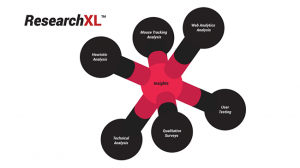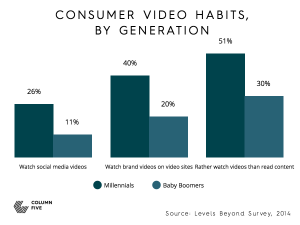Want TV To Succeed? Focus On The Search Bar
You have probably read the headlines, because I certainly have: “advertisers spend more on digital ads than TV,” or “TV ad spending continuing to decline.” Is advertising on TV a hopeless effort? Should TV be abandoned in favor of digital? Not so fast.
Last year, the Interactive Advertising Bureau (IAB) found that for the first time, “digital as a whole” surpassed TV for total media spend. But this shift is not as black and white as it may seem. Let’s take a step back and compare apples to apples.
It’s Not TV Vs. Digital — It’s TV + Search
For many brands, marketing still works in silos. You have your offline team and your online team, and never the twain shall meet. This is an antiquated way of doing things because, as the media landscape has evolved, so have the roles of marketing channels — especially how they interact and influence each other.
Since close to 90% of viewers watch with second-screen devices nearby, TV has become a top driver of search traffic. Forward-thinking brands know the conversation shouldn’t be TV vs. digital. Rather, it should focus on TV + digital. And in this case, TV + search.
Global 2017 TV spend is estimated at $212 billion, and global digital ad spend at $232 billion. But when you drill down into that number, you see that search accounts for $90 billion (and that is a lower estimate!) – accounting for about 40% of the total spend. Together, TV and search make up a $302 billion industry. Why wouldn’t you have them work together?
TV offers both a broad audience and the means to drive digital response. But to make it even more effective, advertisers should “sync” TV spots with paid-search campaigns in the minutes after ads air. We have seen that the intent-to-buy or engage is high in the minutes following a TV spot running. Because of this, advertisers have a tremendous opportunity to capture that TV-driven traffic. But they also run the risk of losing those engaged consumers to competitors if they are not strategic about it.
Get The Top Spot When It Matters Most
If a viewer’s intent-to-purchase is high after they see your TV ad, it makes sense to be in the top search position. Take Google, for example. On average, the top search ranking gets a 20.5% click-through rate (CTR). This is 53% higher than the second position. It is crucial to capture TV-driven search traffic in the minutes after a spot airs — or you could lose interested consumers to competitors (or to whoever happens to have that top spot).
Brands are syncing their own TV spots with search, and they are doing so for competitive and complementary spots. The ability to conquest, which tracks a competitor’s TV spot and then bidding for the top search position in the minutes after, is becoming much more common. We also see this happening with complementary products. For example, a diet pill company might bid to get the top spot after a TV spot runs for an exercise craze or weight-management program.
Review Daily And Optimize Accordingly
The best way to ensure ROI for your synced TV and search initiative is to continuously measure and optimize. Compare your synced search with your regular SEO campaigns, drill down into the ad-specific keywords to see if they are performing, track CTRs in the minutes after ads run, and measure conversions. Test and learn, see what works and what doesn’t, and use those insights to maximize performance.
You are doing your brand a real disservice if you don’t capture TV-driven traffic. It’ time to maximize TV and search spend by making them work together.
(27)
Report Post






